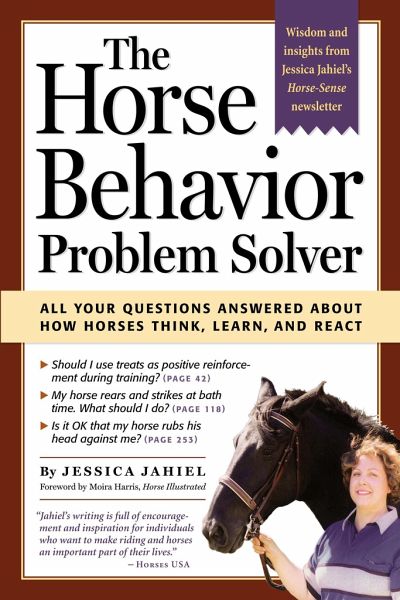
The Horse Behavior Problem Solver
All Your Questions Answered about How Horses Think, Learn, and React
Nicht lieferbar
Horses have a language and a logic all their own, but humans can learn to understand what they are saying. Using a question-and-answer format and drawing on real-life case studies, equine behavior expert Jessica Jahiel, Ph.D., explains how a horse thinks and learns, why it acts as it does, and how you should respond. Here are answers to 101 common horse behavior problems including: * How to handle a frightened or untrained horse * How to help a horse that is head-shy, afraid of the vet, or unwilling to stand for the farrier * What to do with a horse that kicks, rears, bucks, or bites * How to ...
Horses have a language and a logic all their own, but humans can learn to understand what they are saying. Using a question-and-answer format and drawing on real-life case studies, equine behavior expert Jessica Jahiel, Ph.D., explains how a horse thinks and learns, why it acts as it does, and how you should respond. Here are answers to 101 common horse behavior problems including: * How to handle a frightened or untrained horse * How to help a horse that is head-shy, afraid of the vet, or unwilling to stand for the farrier * What to do with a horse that kicks, rears, bucks, or bites * How to help older horses get rid of bad habits and keep young ones from developing them







